#J. Luther Ringwalt
Text
Milestone Monday



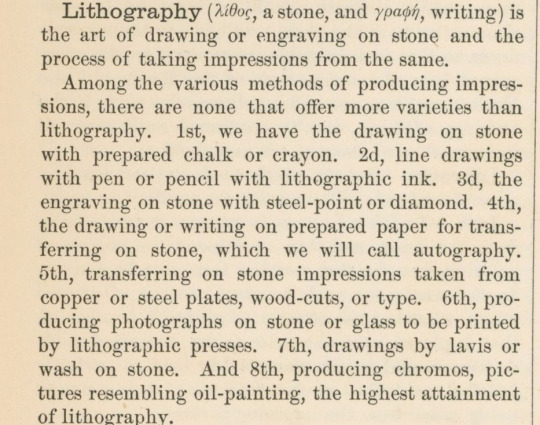

On this day, November 6, 1771, Alois Senefelder (1771-1834) inventor of lithography was born. The son of an actor and tasked with supporting his mother and siblings after his father’s death, Senefelder began his own acting career at age twenty and extended his occupational talents into playwriting. Unable to afford to publish a new play he’d written, Senefelder experimented with what he called “stone printing” in the 1790s, etching acid resistant ink onto limestone and subsequently inventing the first planographic process in printing. Senefelder perfected the chemical process and designed a special printing press with the help of the André family and within five years lithography was being used as a cheap form of creating reproductions by publishers and in mapmaking by land surveying offices throughout Europe.
By the early 1800’s Senefelder and his contemporaries were thinking of ways to introduce color to lithography. Senefelder outlined his ideas on chromolithography in his 1818 book A Complete Course of Lithography, but it was Godefroy Engelmann of France who was awarded the patent for it in 1837.
In celebration of Senefelder’s birthday and all that he contributed to the printing world; we’re looking at the American Encyclopedia of Printing published in 1871 by Menamin & Ringwalt of Philadelphia. Included within the section on lithography is a storied portrait of Senefelder surrounded by his tools and accomplishments. The lithographic portrait was printed by Duval & Hunter, lithographers and chromo publishers out of Philadelphia.
It wasn’t long before artists saw the appeal of lithographs and began taking advantage of the new printing technique. Lithography was far more approachable than other printing methods of the time like engraving, because artists could draw directly on the stone with familiar tools, such as pens and crayons. They did not need to master a new medium or skill to create highly accurate prints with deep textural qualities.
Among the artists of the 1800’s diving into lithography, Honoré-Victorin Daumier (1808-1879) excelled in the medium. Daumier was a prolific French artist who created more than 4,000 lithographs in addition to his many sculptures, paintings, drawings, and wood engravings. His specialty was satirical social caricatures of Parisian life where he effortlessly blended artistry, social commentary, and humor as showcased in the following lithographs held within our collection. The prints were published in 1840 by La maison Aubert of Paris.
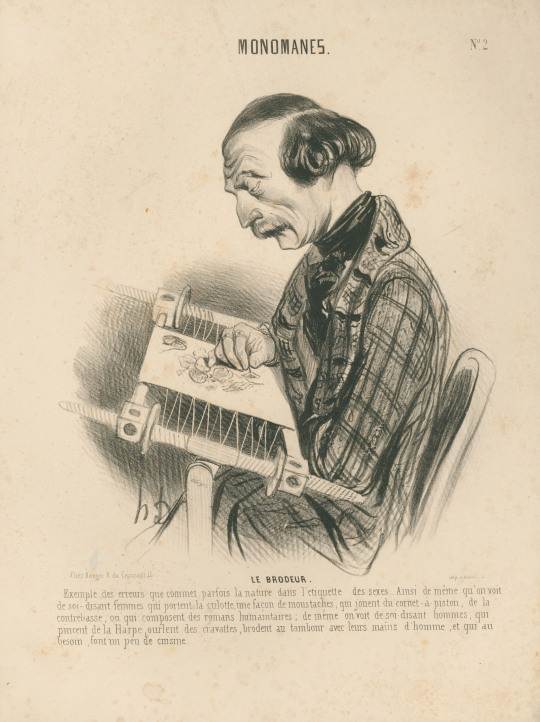

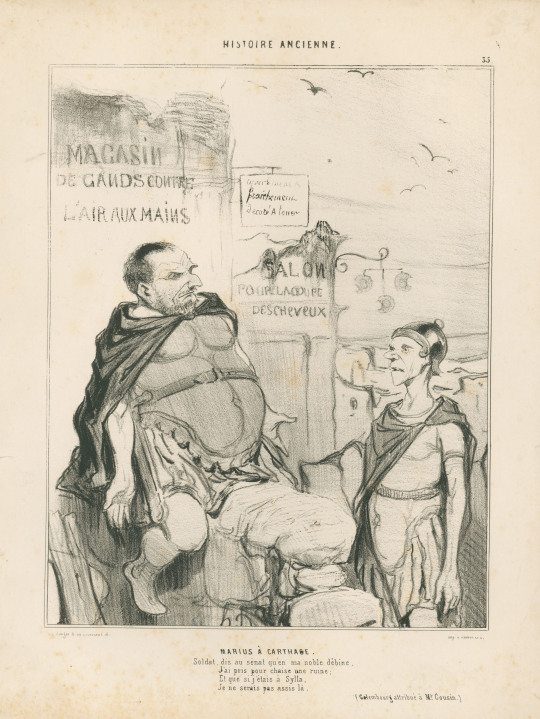
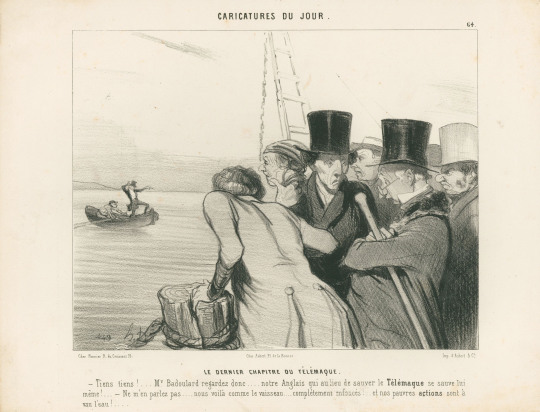

View other posts from the American Encyclopedia of Printing.
View more posts with lithographs.
View more Milestone Monday posts.
– Jenna, Special Collections Graduate Intern
#Milestone Monday#milestones#alois senefelder#lithography#planographic printing#J. Luther Ringwalt#American Encyclopedia of Printing#Menamin & Ringwalt\#Duval & Hunter#Honoré-Victorin Daumier#Daumier#La maison Aubert#lithographs#inventions
18 notes
·
View notes
Photo
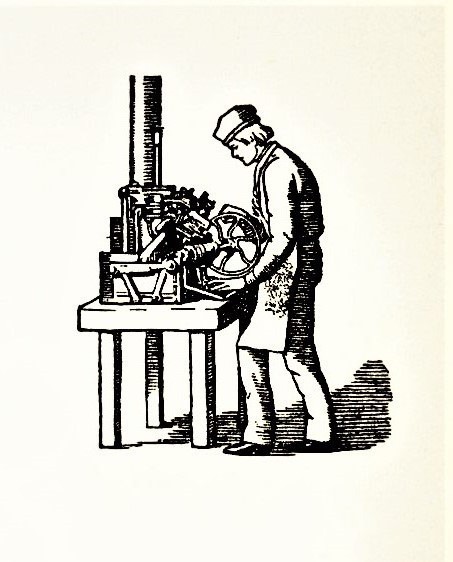



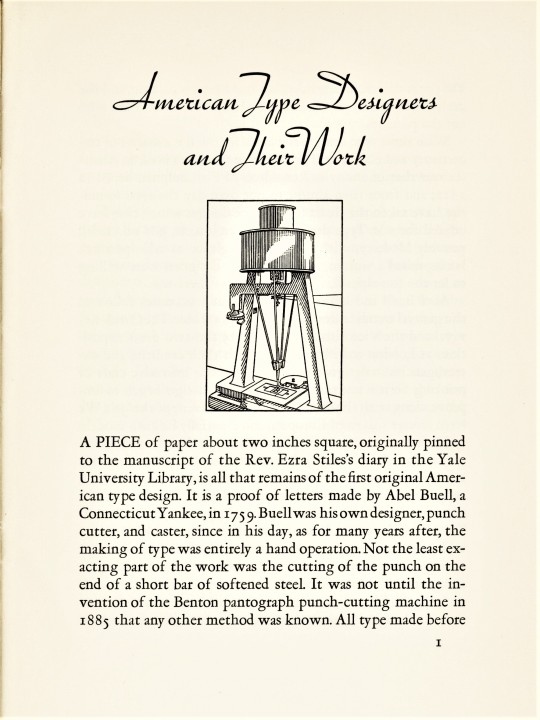
Typography Tuesday
A new addition to our collection is American Type Designers and Their Work, a brief catalog for an exhibition held at the Lakeside Press Galleries of the R. R. Donnelley & Sons Company in Chicago, Illinois, 1947-1948.There are no type samples presented in the catalog, but it lists 48 American type designers who today are luminaries in the American type design constellation.
The catalog was designed by Carl Purington Rollins, the master printer to Yale University from 1920 to 1948. The text is set in Monotype Garamont, designed by Frederic Goudy in 1923, with Trafton Script, designed by Howard Trafton for Bauer Type Foundry in 1933. The illustration of the 19th-century type caster was redrawn form a wood engraving in J. Luther Ringwalt’s American Encyclopedia of Printing, Philadelphia, 1871. The simplified illustration of a matrix-cutting pantograph routing machine was supplied by Limited Editions Club and Heritage Press founder George Macy.
Rollins acknowledges the influence of the English Arts & Crafts movement on early 20th-century American type designers and notes that “With the invention of the pantograph punch cutter [invented by Linn Boyd Benton, the father of Milwaukee-born Morris Fuller Benton, the most prolific type designer of the 20th century] type design became an ‘art’ rather than a craft, and as might be expected the personality of the designer became for various reasons more important.” He continues,
Good types have character and power that we neglect at our peril.. . . A faulty choice can pull against the message and the purpose, even as the veriest jackass. A sound and happy choice can lend wings to words. . . .
Rollins follows this with an admonition from the great American type historian, printer, and founder of the Merrymount Press Daniel B. Updike:
If we do not judge types rightly, they will judge us -- the penalty of foolish choice being the penalty we pay for choosing foolishly in life. We are punished by getting what we want!
View more Typography Tuesday posts.
#Typography Tuesday#typetuesday#Typography Tuesday#Carl Purington Rollins#American Type Designers and Their Work#Monotype Garamont#Frederic Goudy#Trafton Script#Howard Trafton#Lakeside Press#R. R. Donnelley#exhibitions#type design#type designers#type exhibitions#Daniel B. Updike#type casters#pantograph#pantograph router#Linn Boyd Benton#Morris Fuller Benton
20 notes
·
View notes
Photo







Typography Tuesday
This week we return to J. Luther Ringwalt’s wonderful American Encyclopaedia of Printing published in Philadelphia in 1871. We begin with the racist, colonialist, nationalist, and oddly religious chromolithographic, allegorical frontispiece depicting movable type and the printing press as the West’s (and specifically, the free American press’s) heroic contribution to the salvation of humanity, especially the “lesser” races. Yikes!
We follow that with the entries for the Punch and Matrix, a lithograph of typographic activity reproduced from Joseph Moxon’s 17th-century Mechanick Exercises, and wood engravings of a job-case stand and pre-Linotype/Monotype type-setting machines. Several, not-always-reliable mechanical compositors were invented in the 19th century, such as the Mackie and Hattersley machines shown here, before the industry stabilized with just a handful of standard automatic type-setting systems, including Linotype, Monotype, Intertype, and Ludlow Typograph. Mark Twain famously lost his shirt (so to speak) on one of these inventions, the Paige Compositor.
View our other posts on Ringwalt’s Encyclopaedia.
View some of our other Typography Tuesday posts.
#Typography Tuesday#typetuesday#J Luther Ringwalt.#American Encyclopaedia of Printing#type setting#type casters#wood engravings#lithographs#chromolithographs#Yay chromoliths!#19th century
54 notes
·
View notes
Photo


Typography Tuesday
For this Tuesday, “Job Letter” from the American Encyclopaedia of Printing, edited by the publisher and printer J. Luther Ringwalt, and published in Philadelphia in 1871. Ringwalt defines the Job Letter as “all styles of printing-type, except Roman and Italic,” but then states that “This classification may not be regraded as strictly accurate,” giving examples of type forms used for headings and advertisement displays. “Nevertheless, all styles of type used on newspapers and in books are also employed in all other kinds of printing which are generalized as Job-work; so they may all fairly be included in the head Job Letter.
Yes, thanks for that Luther. Clear as mud.
For more information on this truly wonderful encyclopedia, please reference our post on this tome from last year.
View some of our other Typography Tuesday posts.
#Typography Tuesday#job letter#typetuesday#American Encyclopaedia of Printing#J Luther Ringwalt.#19th century
15 notes
·
View notes